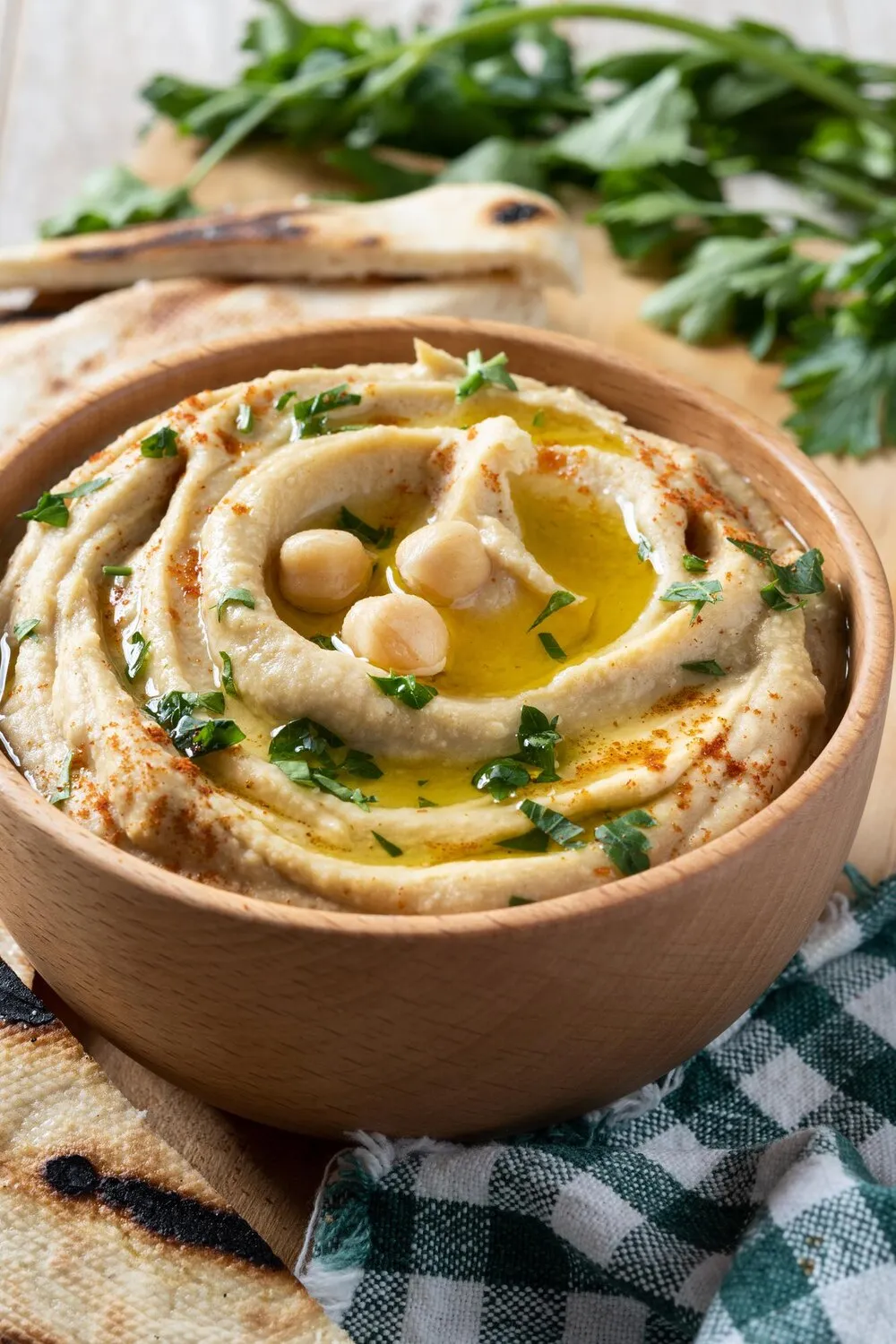
Hummus Classic
Classic hummus dish served with pita bread.
Nutrition Facts
* The % Daily Value (DV) tells you how much a nutrient in a serving of food contributes to a daily diet. 2,000 calories a day is used for general nutrition advice.
The exact origins of hummus are debated, but evidence suggests it has been consumed in various forms in the Middle East for centuries. Chickpeas, the primary ingredient, have been cultivated in the region for over 10,000 years. The earliest known written recipes resembling modern hummus appear in Arabic cookbooks from the 13th century. Over time, it became a staple food across the Levant and eventually spread globally.
Hummus is deeply ingrained in Middle Eastern culture and is considered a symbol of hospitality, shared meals, and regional identity.
Mezze Tradition
Hummus is a quintessential component of the Mezze, a selection of small dishes served as appetizers or as a light meal. Sharing Mezze is a central part of Middle Eastern social gatherings.
Regional Variations and Competition
Different regions within the Middle East, particularly Lebanon, Israel, Palestine, and Syria, claim ownership and pride in their unique hummus recipes, often leading to friendly culinary competition.
Symbol of Identity
For some, hummus represents a cultural and national identity. The dish has become a symbol of cultural heritage and is often associated with specific regions and communities.
Classic hummus boasts a balanced and earthy flavor profile, characterized by savory, nutty, and slightly tangy notes.
The primary flavor comes from the combination of cooked chickpeas, tahini (sesame seed paste), lemon juice, garlic, and olive oil. Chickpeas provide a creamy texture and subtle, nutty taste. Tahini contributes a rich, nutty, and slightly bitter depth. Lemon juice adds brightness and tanginess, balancing the richness of the tahini. Garlic provides a pungent and savory kick. Olive oil enhances the overall flavor and texture, adding a smooth and fruity finish. Common additions like cumin further enhance the earthy notes.
Quality Tahini
Using high-quality tahini is crucial for achieving the authentic flavor and smooth texture of hummus. Look for tahini made from Ethiopian sesame seeds for the best results.
Overcook the Chickpeas
Slightly overcooking the chickpeas makes them softer and easier to blend into a smooth and creamy texture. Simmer them for longer than you think you need to.
Ice Water Secret
Adding a tablespoon or two of ice water while blending helps to create an exceptionally light and airy texture.
Garlic Considerations
Raw garlic can be overpowering. Consider blanching it briefly in boiling water to mellow the flavor or roasting it for a sweeter, more subtle taste.
Lemon Juice Adjustment
Start with a small amount of lemon juice and add more to taste. The acidity should balance the richness of the tahini, but not overwhelm the other flavors.
Explore additional Hummus dishes and restaurants
Explore HummusDiscover top dining spots and culinary experiences in Köln.
Explore KölnLearn more about the food culture, restaurant scene, and culinary heritage of Germany.
Explore Germany